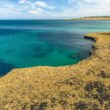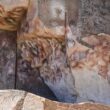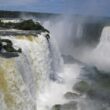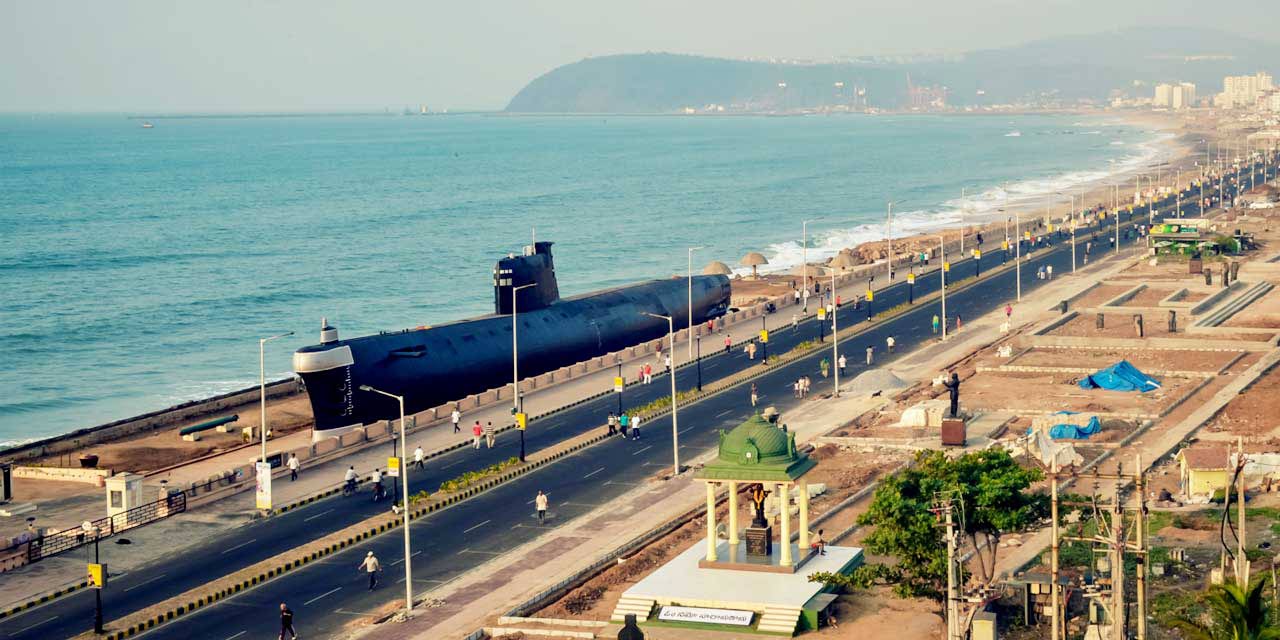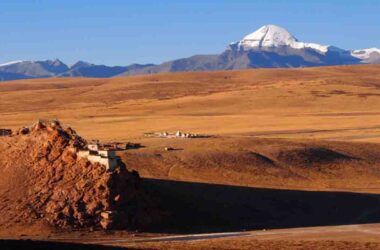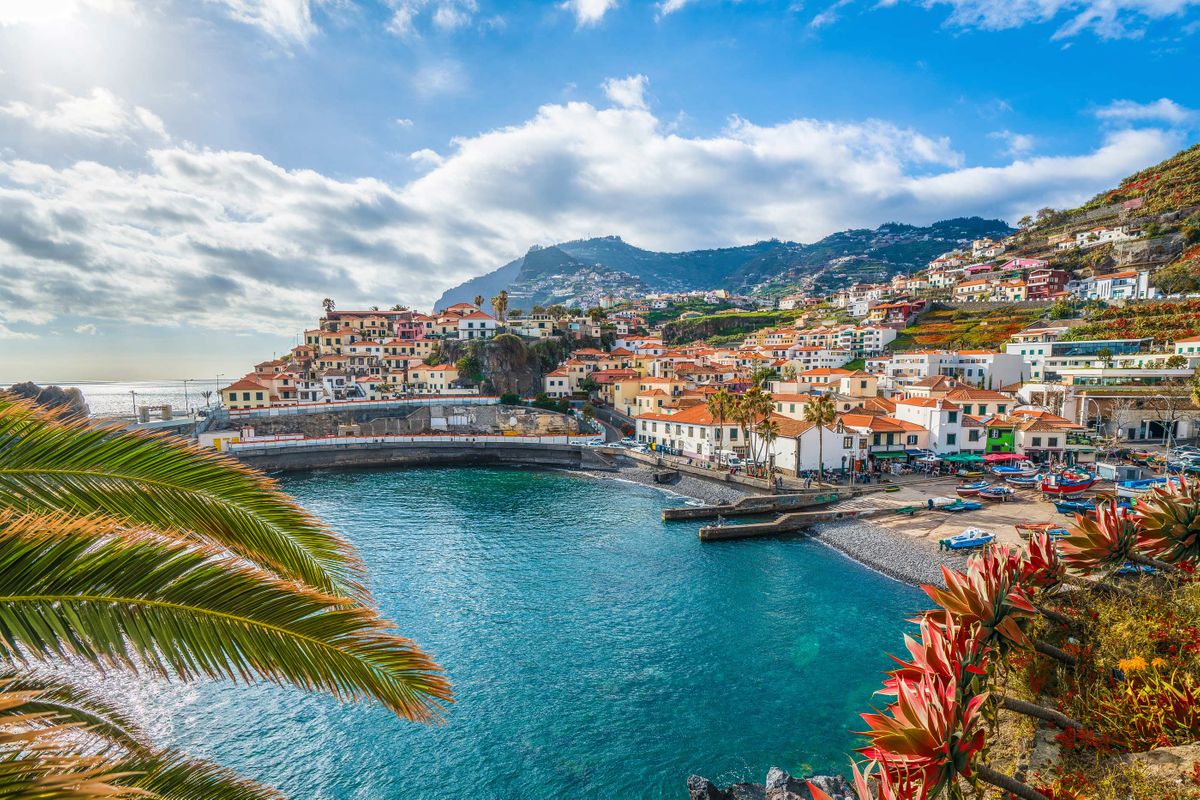Borra Caves, located in the Ananthagiri Hills of the Araku Valley in the Indian state of Andhra Pradesh, are a breathtaking natural wonder that offers a unique and exciting adventure for visitors. The caves, also known as Borra Guhalu, are known for their impressive stalactite and stalagmite formations, as well as the beautiful and intricate patterns that have been carved into the limestone rock by centuries of erosion.
The name “Borra” means “something that has bored into the ground,” which is fitting given the caves’ subterranean nature. The caves were discovered in 1807 by British geologist William King, but it is believed that they have been used by human beings for thousands of years. The local tribal people, the Kondh, have long considered the caves to be sacred, and still use them for rituals and ceremonies to this day.
The main attraction of the Borra Caves is the large, cathedral-like chamber that is located deep inside the caves. This chamber, known as the “Shiva Linga,” is a massive column of rock that is said to resemble the Hindu god Shiva. The chamber is illuminated by a skylight that allows sunlight to filter down through the cave, casting a beautiful ethereal light on the surrounding rock formations.
In addition to the main chamber, the Borra Caves also feature a number of smaller chambers, each with its own unique features and formations. Some of these chambers are adorned with delicate and intricate rock formations, while others are adorned with beautiful flowstone and stalactites. The caves also feature a number of natural skylights, which allow visitors to see the sky and the surrounding landscape from deep within the cave.
Visiting the Borra Caves is a unique and exciting experience that offers a chance to explore one of India’s most beautiful natural wonders. The caves are located in a remote and rugged area of the Araku Valley, which makes them an ideal destination for those who enjoy hiking and outdoor adventure. The caves are open to visitors year-round, but the best time to visit is between October and March when the weather is cooler and the landscape is lush and green.
To reach the caves, you have to take a bus or jeep ride from Araku to the caves which take around 1 hour. The caves are open from 9 am to 5 pm, and the entry fee is INR 20 for Indians and INR 500 for foreign tourists.
In conclusion, the Borra Caves are truly a natural wonder and a must-see destination for anyone visiting the Araku Valley. With their breathtaking rock formations, natural skylights, and rich cultural history, these caves offer a unique and unforgettable experience for visitors. Whether you’re a seasoned explorer or just looking for a new and exciting adventure, the Borra Caves are sure to leave you awestruck and inspired.
History of Borra Caves
Borra Caves, also known as Borra Guhalu, are located in the Ananthagiri Hills of the Araku Valley in the Indian state of Andhra Pradesh. The caves have a long and rich history, dating back thousands of years.
The caves were first discovered in 1807 by British geologist William King, who was conducting a survey of the region for the East India Company. However, it is believed that the caves have been used by human beings for much longer than that. The local tribal people, the Kondh, have long considered the caves to be sacred, and they have been used for rituals and ceremonies for centuries.
There are several legends associated with the formation of the caves, one of them being that Lord Shiva, the Hindu god of destruction, had bored into the earth to retrieve the ‘Sivalingam’, or the phallus, of Lord Vishnu, the Hindu god of preservation.
The caves have been studied by several geologists and speleologists in the past, who have determined that the caves were formed by the action of water on the limestone rock. Over time, the water dissolved the rock, creating underground channels and caverns, and leaving behind the impressive stalactite and stalagmite formations that can be seen today.
In recent years, the Borra Caves have become a popular tourist destination, drawing visitors from all over the world to admire the caves’ beautiful rock formations and natural skylights. However, the caves are also an important archaeological site, and several excavations have been conducted in the area in an effort to uncover more information about the caves’ history and the people who lived there.
In conclusion, the Borra Caves have a rich and fascinating history that spans thousands of years. From their sacred significance to the local tribes to the geological processes that formed them, the caves are a unique and important part of the region’s cultural and natural heritage.
Facts About Borra Caves
- Borra Caves, also known as Borra Guhalu, are located in the Ananthagiri Hills of the Araku Valley in the Indian state of Andhra Pradesh.
- The caves were first discovered in 1807 by British geologist William King.
- Borra Caves are known for their impressive stalactite and stalagmite formations, as well as the intricate patterns that have been carved into the limestone rock by centuries of erosion.
- The local tribal people, the Kondh, have long considered the caves to be sacred and still use them for rituals and ceremonies.
- The main attraction of the Borra Caves is the large, cathedral-like chamber that is located deep inside the caves, known as the “Shiva Linga”, which is said to resemble the Hindu god Shiva.
- The caves also feature a number of smaller chambers, each with its own unique features and formations, natural skylights, and beautiful flowstone.
- The best time to visit the caves is between October and March when the weather is cooler and the landscape is lush and green.
- The caves are open from 9 am to 5 pm, the entry fee is INR 20 for Indians and INR 500 for foreign tourists.
- The caves are a popular tourist destination, drawing visitors from all over the world to admire the caves’ beautiful rock formations and natural skylights.
- The caves are also an important archaeological site, several excavations have been conducted in the area to uncover more information about the caves’ history and the people who lived there.
Things to do at Borra Caves
- Explore the Caves: One of the main reasons to visit the Borra Caves is to see the impressive stalactite and stalagmite formations, intricate patterns, and the cathedral-like chamber known as the “Shiva Linga”. Visitors can take a guided tour of the caves to learn more about the history and geology of the area.
- Photography: The caves offer a unique and picturesque setting for photography enthusiasts. Visitors can take beautiful shots of the natural skylights, rock formations, and the surrounding landscape.
- Hiking and Trekking: The Ananthagiri Hills surrounding the caves offer a great opportunity for hiking and trekking. Visitors can enjoy the scenic views of the valley and the surrounding hills while taking a hike.
- Tribal Village Visit: The local Kondh tribes are an important part of the Borra Caves’ history and culture, and visitors can take a guided tour of the nearby tribal villages to learn more about their way of life and customs.
- Bird Watching: The caves are located in a diverse ecological area, and visitors can spot a variety of bird species like Hill Myna, Indian Pitta, Golden Oriole, and many more.
- Enjoy the Scenic views: Visitors can also take a scenic drive to the caves, and enjoy the beautiful views of the valley and the surrounding hills on the way.
- Try Local Cuisine: Visitors can also try local cuisines like bamboo chicken, bamboo fish curry, and other traditional dishes of the tribes, which are not easily available elsewhere.
- Shopping: Visitors can also shop for local handicrafts and souvenirs like bamboo products, bell metal crafts, and traditional Kondh jewelry.
Overall, Borra Caves offer a wide range of activities for visitors to enjoy, from exploring the caves and taking in the scenic views, to learning about the local culture and trying local cuisine.
Weather at Borra Caves
The weather at Borra Caves can vary depending on the time of year. The caves are located in the Araku Valley, which has a tropical climate characterized by high humidity and heavy rainfall.
Summer (March-May): The summers are hot and humid, with temperatures reaching up to 35°C (95°F) during the day. Monsoon season starts in June and it could be heavy rainfall and landslides, it’s not advisable to visit the caves during this time.
Monsoon (June – September): The monsoon season brings heavy rainfall to the area, making it difficult to visit the caves. The area is prone to landslides and flash floods, so it is not recommended to visit the caves during this time.
Winter (October – February): The winter months are the best time to visit the caves, as the weather is cooler and more comfortable. The temperatures during the day are usually between 20°C (68°F) and 25°C (77°F) and it’s pleasant to explore the caves.
Overall, the best time to visit the Borra Caves is between October and March when the weather is cooler and more comfortable. The landscape is also lush and green during this time, making it an ideal time to take in scenic views.
Borra Caves Trekking
Trekking to Borra Caves is a unique and exciting way to experience the natural beauty of the Ananthagiri Hills and the caves themselves. The trek is a moderate to difficult level hike, and it offers visitors the chance to explore the caves and the surrounding hills in a more immersive and adventurous way.
The trek starts from the base of the Ananthagiri Hills and takes visitors through lush green forests and over rocky terrain. The trek passes through several small tribal villages, which offer a glimpse into the local culture and way of life. The trail is well marked and maintained, but it is recommended to do it with a guide, as they can provide information about the history and geology of the area and help navigate the trail.
The trek to the caves takes around 2-3 hours one way, depending on the fitness level of the trekkers. Trekkers should be prepared for a moderate to difficult hike and should wear appropriate clothing and footwear. It’s also important to carry enough water and snacks, as there are no facilities along the way.
Once visitors reach the caves, they can explore the cave’s chambers, admire the beautiful rock formations, and take in the natural skylights. Visitors can also explore the surrounding area and take in the beautiful views of the valley and the surrounding hills.
Overall, trekking to Borra Caves is a unique and exciting way to experience the natural beauty of the Ananthagiri Hills and the caves themselves. It’s a great option for those who enjoy hiking and outdoor adventure, but visitors should be prepared for a moderate to difficult hike and carry the necessary equipment and supplies.
Similar Article – Visakhapatnam: Guide to India’s Jewel of the East Coast
Frequently Asked Questions About Borra Caves
Q: How do I get to Borra Caves?
A: The Borra Caves are located in the Ananthagiri Hills of the Araku Valley in the Indian state of Andhra Pradesh. The best way to reach the caves is by taking a bus or jeep ride from Araku, which takes around 1 hour. Visitors can also hire a taxi or drive their own vehicle to the caves.
Q: What is the best time to visit Borra Caves?
A: The best time to visit the Borra Caves is between October and March when the weather is cooler and more comfortable. The landscape is also lush and green during this time, making it an ideal time to take in scenic views.
Q: Is there an entry fee to the Borra Caves?
A: Yes, there is an entry fee to the Borra Caves. The entry fee for Indian citizens is INR 20, and for foreign tourists, it is INR 500.
Q: How long does it take to explore the caves?
A: The time it takes to explore the caves will vary depending on the visitor’s interests and pace, but most visitors spend around 1-2 hours exploring the caves.
Q: Are there facilities available at the caves?
A: The facilities at the caves are limited. There are toilets and a small shop selling snacks and souvenirs. Visitors should plan to bring their own food and water as there are no restaurants or other facilities nearby.
Q: Are there any safety precautions to consider when visiting the caves?
A: Visitors should be aware that the caves can be dark and damp, and the paths can be slippery. It’s important to wear appropriate clothing and footwear and to bring a flashlight or torch. Visitors should also be aware of the risk of landslides and flash floods during the monsoon season.

